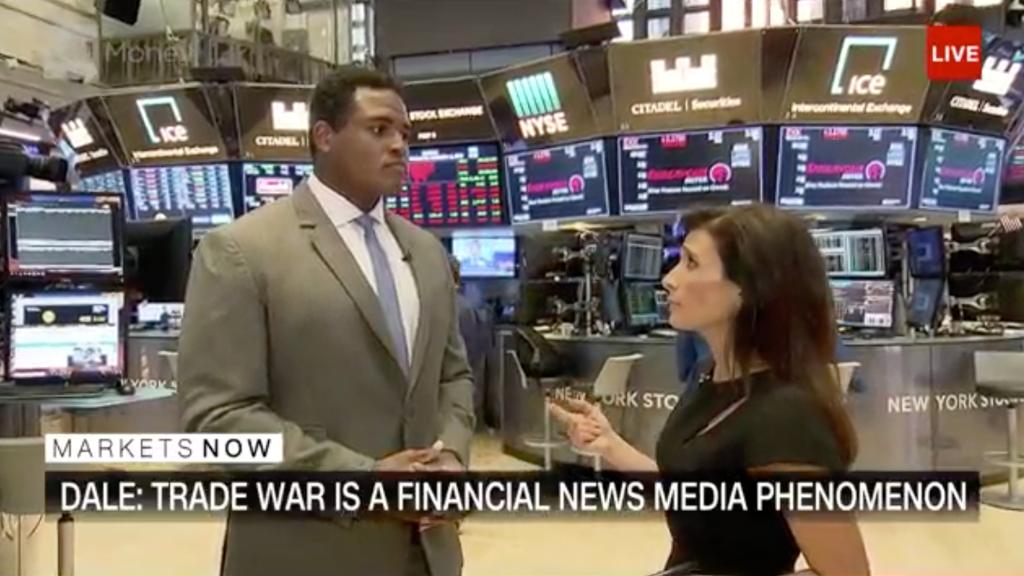
Presidential influence. A trade war with China. Rising interest rates. Recession-proofing of US banks.
Those are just some of the topics Federal Reserve Chairman Jerome Powell is likely to face at a press conference on Wednesday after the Federal Open Market Committee concludes its two-day policy-setting meeting.
Policymakers gathered in Washington this week are expected to raise the benchmark interest rate by a quarter of a percentage point for the third time this year, to a range of 2% to 2.25%.
The rate hike is widely expected by investors. What's not as well known is how the Fed is contending with risks to economic growth, including the ballooning trade war and rising oil prices, or with President Donald Trump's desire to keep rates low.
What's more, in recent weeks, Fed officials have appeared publicly divided on how fast the Fed will need to act next year and beyond.
The central bank has penciled in a fourth rate hike later this year, then three more in 2019 and one in 2020. Analysts will be watching for any possible changes when policymakers update their forecast on Wednesday.
Defending the Fed's independence
All eyes will be on Powell, who will have an opportunity to respond publicly to Trump's criticisms about the Fed's policies.
Over the summer, the president took the rare step of repeatedly going after his Fed chair, who he said was undermining America's competitive edge against China by raising interest rates.
Since Trump took office, the Fed has raised rates five times, including twice this year under Powell. The Fed is gradually raising rates as the economy gains strength.
"I'm not thrilled with his raising of interest rates, no. I'm not thrilled," Trump, who appointed Powell to lead the central bank, said during an interview with Reuters in August. "I should be given some help by the Fed."
Presidents have historically avoided commenting on the Fed's policies. The central bank is designed to be independent from political interference.
The Fed hasn't commented on the president's criticism. But Powell expressed a deep commitment to the central bank's independence during an interview with American Public Media's "Marketplace" radio show in July.
Fighting off trade tensions
Fed officials are already worried about how the trade war may affect the US economy. But as tensions rise, how is the Fed calculating and planning for those risks and uncertainties? That's the question investors want answered.
Policymakers have said a "major escalation" of trade disputes could speed inflation and cause businesses to pull back on investments, according to minutes of their July meeting. Such turmoil, participants noted, could reduce household spending and disrupt companies' supply chains.
So far, Powell has been publicly cautious about the impact that trade tensions could have on wages and capital spending.
"We don't see it in the numbers yet, but we've heard a rising chorus of concern" about businesses scaling back plans for capital spending, Powell told lawmakers in July. He also said it's challenging to forecast the economic impact.
Since Powell said that, the Trump administration has followed through on its threats to impose a 10% tariff on $200 billion in Chinese goods, on top of other tariffs levied on China earlier this year. The most recent level is set to rise next year to 25% if the trade impasse is not resolved.
Efforts to restart talks between the world's two largest economies have also waned, adding to uncertainty about how long the trade fight will continue.
More rate hikes in 2019?
It depends on whom you ask. Policymakers are divided over whether the Fed will need to raise rates next year faster than it has forecast.
Some officials, like Fed Governor Lael Brainard, have argued that the recent tax cuts and a spike in government spending will further heat the economy and require higher interest rates over the next year or two.
Others say that as long as inflation sticks to the Fed's target of 2% — the level it considers healthy for the economy — the Fed should take a slower approach.
"We think there is a good chance the dot plots may shift and show a Fed more willing to raise interest rates than previously expected," Brian Gardner, an analyst for investment bank Keefe, Bruyette & Woods wrote in an analyst note, referring to the Fed's forecasting tool.
In August, Powell defended the Fed's strategy of raising rates gradually at a conference in Wyoming. He said it keeps the economy on even keel, as long as inflation is stable and unemployment continues to fall.
Still, investors will be scouring updated economic projections for any hints about whether that thinking is changing.
New policymakers, new forecasts
The Fed's updated economic forecast will have a new wrinkle.
Fed Vice Chairman Richard Clarida will join the FOMC meeting for the first time. And former Fed President William Dudley has retired. The central bank's outlook may shift with a new lineup.
This week's forecast, which will update economic projections for 2018 through 2020, will also include 2021 for the first time. Wall Street is watching especially for clues about rates over the long term.
Preventing a financial bubble
For the first time, Fed officials are also weighing whether to trigger a mechanism that would require banks to hold even more capital as a buffer against a financial calamity.
The regulatory tool, created under the 2010 Dodd-Frank Act, requires banks to pad their balance sheets with additional capital during good economic times to help soften the fallout in periods of hardship.
It's never been used before, and banks don't want to see it take effect. But Fed officials are debating whether to push forward to lessen the likelihood of another financial crisis.
Powell hasn't weighed in, but the subject might be hard to avoid Wednesday. Policy makers discussed the merits during the last Fed meeting, minutes show.


